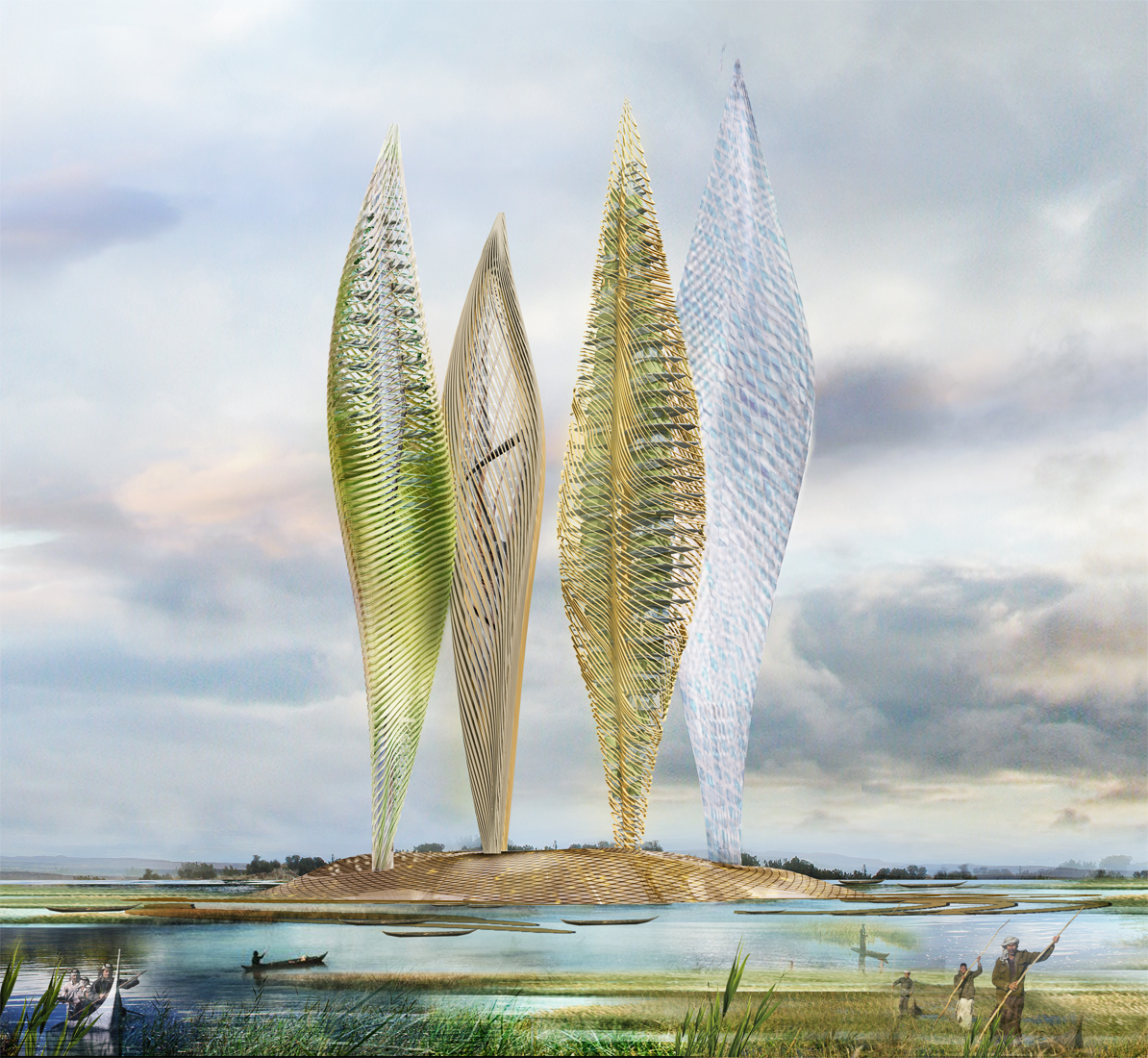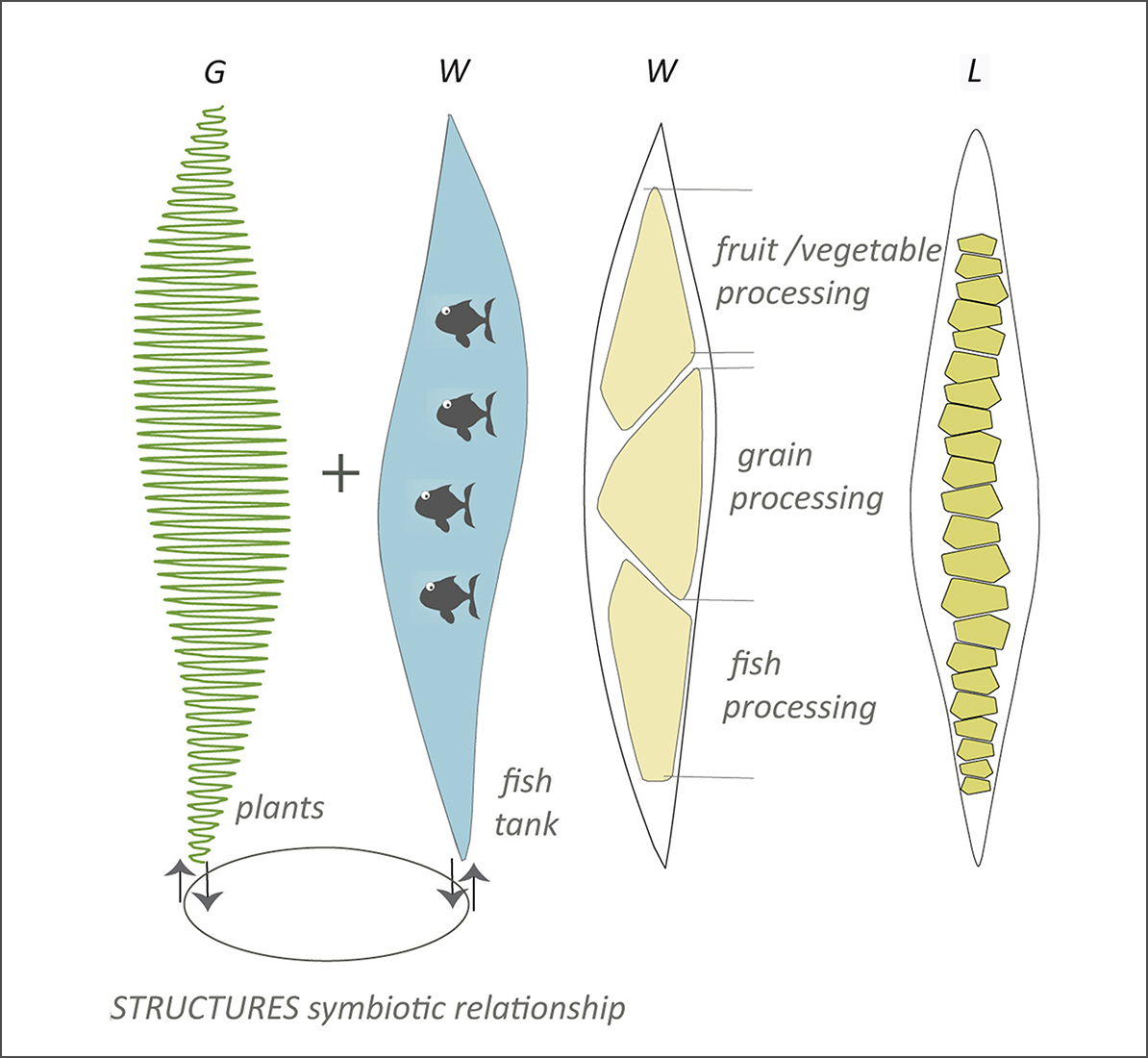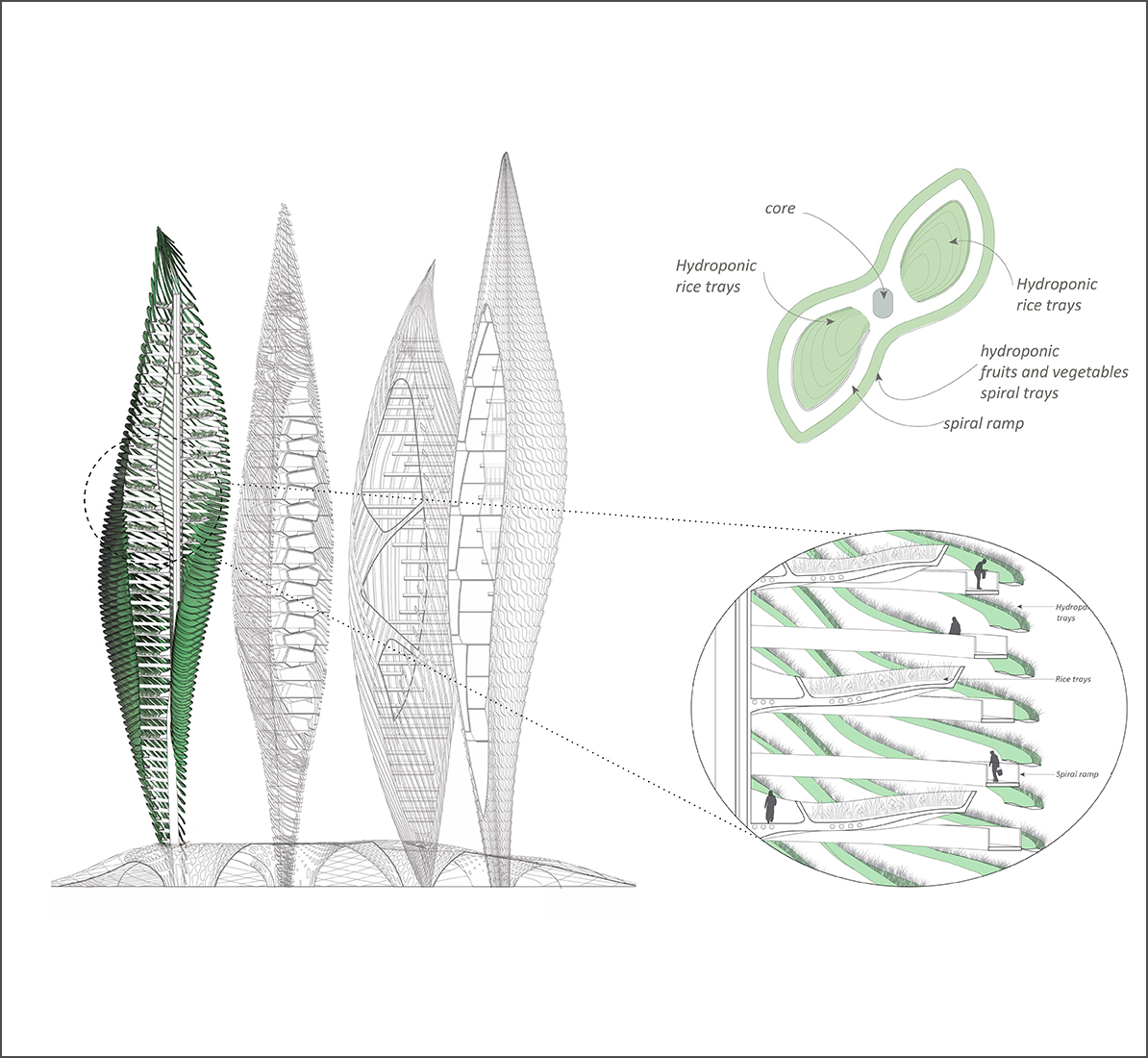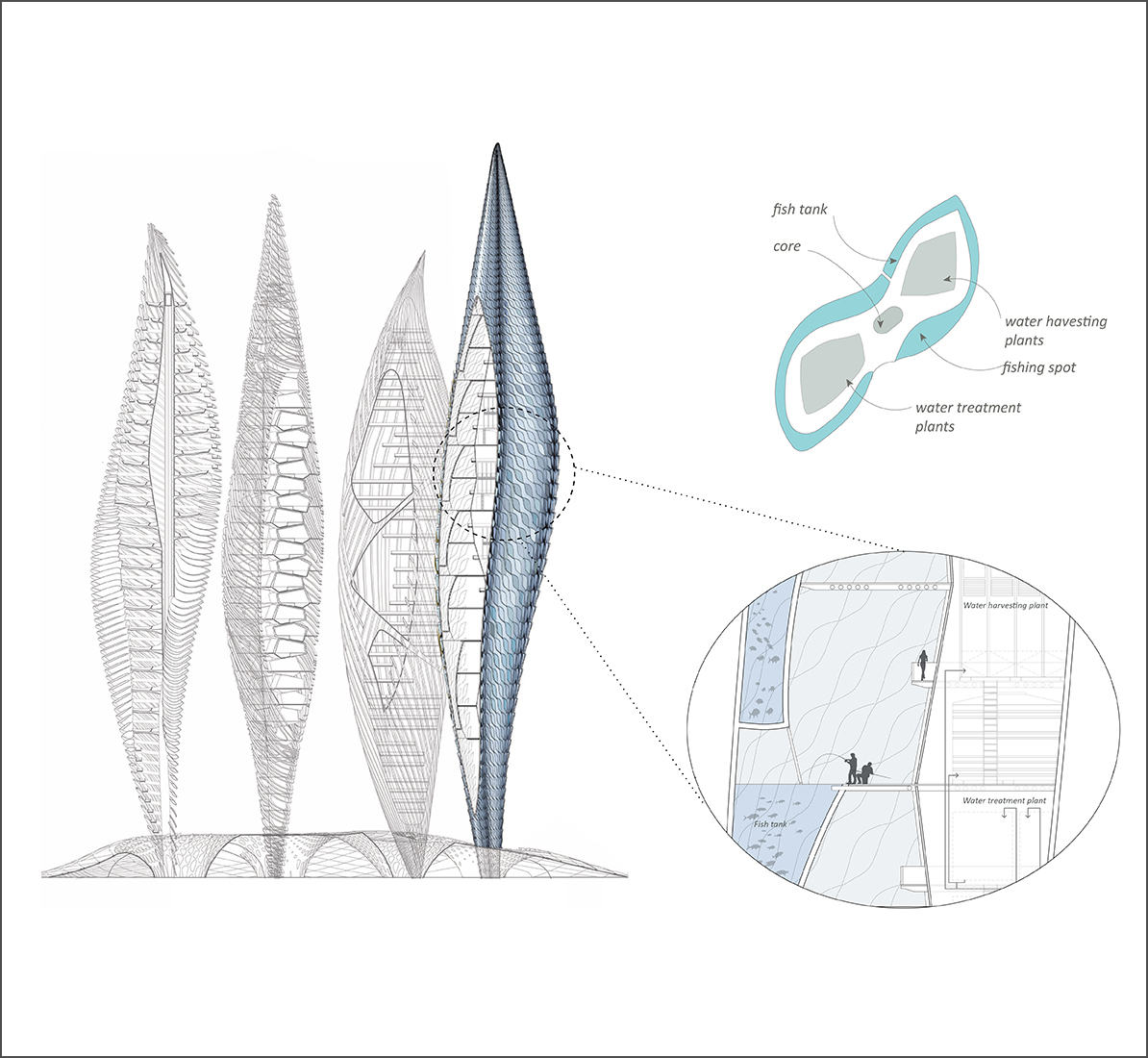Location: Southern Iraq
Design Director: Raya Ani
Company Name: RAW-NYC Architects
Category: Architecture
Year: 2013
The marshes of Southern Iraq have been an endangered natural site with an endangered culture and tradition for decades. It is on UNESCO World Heritage list of sites and it has been a site of interest for many organizations. Efforts have been made to save it and to return it to its old glory.
The design intends to provide a conceptual framework to organize the marsh communities of Southern Iraq into a modern and economically viable entity while addressing the most critical ecological concerns.
While preserving the tradition of fishing and farming, the proposal recommends technologies to produce organic food and potable water, generate green energy, and even cultivate fish. It is conceived to inspire the indigenous people to engage in restoring the deteriorated ecosystem of the marshes.
Vertically slim structures that vanish towards the sky while barely touching the landscape are interconnected within floating islands. These islands are dispersed in the landscape forming a pattern akin to the existing islands of the marshes. The four structures (living, work, water, green) have a symbiotic relationship where the survival of one is reliant on the existence of the other. They are made of lightweight, pre-fabricated components that can be erected quickly where needed with minimum impact on the environment. They are designed to enhance the natural conditions by cleaning the marshes’ water, treating the waste, generating energy, purifying air and improving water quality, thus accelerating the restoration process for the return of the people and the natural inhabitants of the marshes.
Location: Southern Iraq
Design Director: Raya Ani
Company Name: RAW-NYC Architects
Category: Architecture
Year: 2013
The marshes of Southern Iraq have been an endangered natural site with an endangered culture and tradition for decades. It is on UNESCO World Heritage list of sites and it has been a site of interest for many organizations. Efforts have been made to save it and to return it to its old glory.
The design intends to provide a conceptual framework to organize the marsh communities of Southern Iraq into a modern and economically viable entity while addressing the most critical ecological concerns.
While preserving the tradition of fishing and farming, the proposal recommends technologies to produce organic food and potable water, generate green energy, and even cultivate fish. It is conceived to inspire the indigenous people to engage in restoring the deteriorated ecosystem of the marshes.
Vertically slim structures that vanish towards the sky while barely touching the landscape are interconnected within floating islands. These islands are dispersed in the landscape forming a pattern akin to the existing islands of the marshes. The four structures (living, work, water, green) have a symbiotic relationship where the survival of one is reliant on the existence of the other. They are made of lightweight, pre-fabricated components that can be erected quickly where needed with minimum impact on the environment. They are designed to enhance the natural conditions by cleaning the marshes’ water, treating the waste, generating energy, purifying air and improving water quality, thus accelerating the restoration process for the return of the people and the natural inhabitants of the marshes.




Location: Southern Iraq
Design Director: Raya Ani
Company Name: RAW-NYC Architects
Category: Architecture
Year: 2013
The marshes of Southern Iraq have been an endangered natural site with an endangered culture and tradition for decades. It is on UNESCO World Heritage list of sites and it has been a site of interest for many organizations. Efforts have been made to save it and to return it to its old glory.
The design intends to provide a conceptual framework to organize the marsh communities of Southern Iraq into a modern and economically viable entity while addressing the most critical ecological concerns.
While preserving the tradition of fishing and farming, the proposal recommends technologies to produce organic food and potable water, generate green energy, and even cultivate fish. It is conceived to inspire the indigenous people to engage in restoring the deteriorated ecosystem of the marshes.
Vertically slim structures that vanish towards the sky while barely touching the landscape are interconnected within floating islands. These islands are dispersed in the landscape forming a pattern akin to the existing islands of the marshes. The four structures (living, work, water, green) have a symbiotic relationship where the survival of one is reliant on the existence of the other. They are made of lightweight, pre-fabricated components that can be erected quickly where needed with minimum impact on the environment. They are designed to enhance the natural conditions by cleaning the marshes’ water, treating the waste, generating energy, purifying air and improving water quality, thus accelerating the restoration process for the return of the people and the natural inhabitants of the marshes.